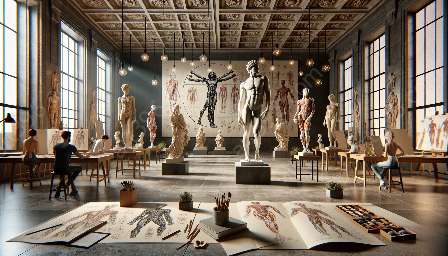Art education curricula hold numerous benefits when incorporating gesture drawing, especially in relation to anatomy and artistic anatomy.
The Benefits of Gesture Drawing in Art Education:
Gesture drawing, also known as gesture sketching, is the art of quickly capturing the essence, movement, and form of a subject through quick, loose lines and shapes. When incorporated into art education curricula, it offers various advantages:
- Understanding Form and Movement: Gesture drawing helps students understand the dynamic movements and forms of the human body. It trains their eyes to capture the underlying structure, essential for a solid foundation in artistic anatomy.
- Developing Observation Skills: By practicing gesture drawing, students learn to observe and capture the essence of a subject within a short timeframe. This enhances their observational skills, essential for understanding anatomical proportions and structures.
- Expressive and Fluid Art: Gesture drawing encourages expressive and fluid lines, aiding students in developing a dynamic and energetic approach to their artwork. This not only applies to figurative art but also permeates into other areas of artistic expression.
- Anatomy Learning Tool: Incorporating gesture drawing as a tool for learning anatomy offers a practical application of theoretical knowledge. It allows students to see the underlying anatomical structures in action, facilitating a deeper understanding of the subject matter.
- Enhanced Creativity and Intuition: Through gesture drawing, students improve their creativity and develop their intuition, as it requires them to work quickly and decisively, fostering an instinctual approach to art creation.
Gestural Drawing and its Connection to Anatomy:
Gestural drawing not only benefits art education curricula but also directly influences the understanding of anatomy and artistic anatomy:
- Dynamic Study of Human Anatomy: Gesture drawing enables an immediate, dynamic study of human anatomy. It allows students to capture the dynamic movements and fluidity of the human form, essential in understanding the structure and functionality of the body.
- Enhanced Understanding of Proportions: Through gesture drawing, students develop a keen understanding of proportions and spatial relationships within the human body. This practical application aids in the comprehension of anatomical proportions and spatial relationships.
- Connection to Artistic Anatomy: Gesture drawing is closely intertwined with artistic anatomy, as it provides a hands-on experience in applying anatomical knowledge to art creation. By capturing the essence of movement and form, students can more effectively translate this knowledge into their figurative artworks.
Conclusion
Gestural drawing brings immense benefits to art education curricula through its impact on understanding anatomy and artistic anatomy. Its dynamic and expressive nature not only aids in the development of technical skills but also nurtures creativity and intuition, making it an indispensable tool for aspiring artists.

